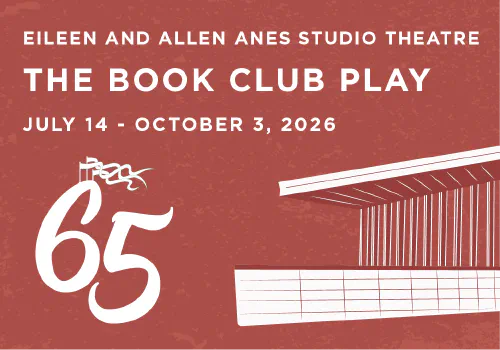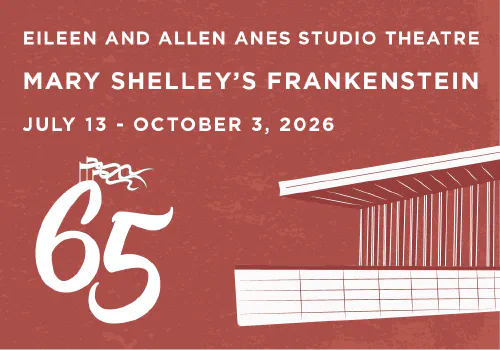By Marlo Ihler
The story of Anne Frank is one of the most well-known in literature, with most people having read it in school or having seen one of the many film, stage, or television adaptations since her diary was published in 1947. Since its first publication, it has become one of the most widely read books throughout the world.
What many may not know are some of the lesser known details surrounding the writing of the diary, the story of how the diary came to be so renowned, or the background of its theatrical productions on Broadway.
Anne Frank (1929–1945) was only four years old when her family moved to Amsterdam from Germany, where Adolf Hitler had recently been appointed chancellor. In 1940 Germany invaded the Netherlands causing 24,000 Jews to go into hiding in order to preserve their lives. Anne’s family went into hiding with four other individuals the day after her sister, Margot, received a call-up notice to report for deportation to a labor camp in July 1942. Only a month earlier, Anne had received the diary for her thirteenth birthday in which she later would chronicle two years of emotions, fears, and experiences of living in the hidden annex above her father’s spice business.
Anne’s writings, some may not know, also included short stories, fairly tales, essays, and the beginning of a novel (www.ushmm.org/museum/exhibit/online/af/htmlsite/story.html). She was meticulous in her writing, editing and reworking her diary after hearing a radio broadcast asking citizens to keep diaries as historical records. These original documents consisted of five notebooks and more than 300 loose pages, in addition to her original diary.
Otto Frank, Anne’s father, was the only one of the eight inhabitants of the secret annex to survive the concentration camps, following their discovery in August 1944. Miep Gies, one of their Dutch protectors who worked on the main floor of the building, discovered Anne’s diaries after their arrest and kept them safe until Otto returned after the war. He deliberated whether to publish Anne’s writings, but ultimately felt it was important that others learn about their experience. The diary was published in German using Anne’s chosen title, The Secret Annex, in June 1947, and included Anne’s rewritten version plus parts of the original diary (Tom Brandt, Cheryl Ann Hornstein, and Mary Finnerty, eds., The Diary of Anne Frank: An Educational Study Guide [Park Square Theatre, St. Paul, Minnesota, 2007], p. 6. Found on http://www.sainthelena.us). Only 1,500 copies were printed but demand was so high that another edition was quickly produced. Since then, other versions and editions have been printed and it has been translated into nearly seventy languages.
In 1955, Hollywood screenwriters, Frances Goodrich and Albert Hackett, one of the most prolific husband-and-wife writing teams during the Golden Age of cinema, took on the monumental task of turning Anne’s diary into a stage play. Having written such screenplays as The Thin Man (1934), Easter Parade (1948), Father of the Bride (1950), Seven Brides for Seven Brothers (1954), and It’s a Wonderful Life (1946), adapting Anne’s diary was a very different story for them to write.
Goodrich and Hackett both had extensive backgrounds in the theatre. Goodrich (1890-1984) became interested in drama in college and made her Broadway debut in 1916. As an actress, she was well-trained, though she said herself: “I wasn’t very good” (David L. Goodrich, The Real Nick and Nora: Frances Goodrich and Albert Hackett, Writers of Stage and Screen Classics [Carbondale, IL: Southern Illinois University Press, 2001], p. 11).
Hackett (1900-1995) was the son of professional actors and made his stage debut at age six. As a teenager, he attended the Professional Children’s School in New York City (Donald W. McCaffrey. “Goodrich, Frances and Albert Hackett,” International Dictionary of Films and Filmmakers, 2001. Found on http://www.encyclopedia.com). He performed in numerous films and on stage before meeting Goodrich in 1927 while they were both actors for a Denver theatre company. Shortly thereafter they tried their hand at writing together. They married in 1931 and soon began their lifelong career as a writing team.
The process of adapting Anne Frank’s personal day-to-day writings into a play with narrative shape (a distinct beginning, middle, and end) was very challenging. They worked with playwright Lillian Hellman, Garson Kanin (director of the first Broadway production), and Otto Frank on their adaptation (Brandt, p.11) They altered and selectively chose events from the diary, as well as making other adaptations. For example, they removed numerous details about the Frank family’s Jewishness. Otto Frank himself was quoted as saying “It is not a Jewish book. So do not make a Jewish play out of it” (Brandt, p. 11).
First drafts of the play emphasized Anne’s mischievous nature. The final version emphasized her idealism and optimism. Otto Frank felt it important that it focus on the universal elements of Anne’s story. Goodrich and Hackett researched every detail and worked on the script for two years. As part of their research, they traveled to Amsterdam with Kanin to visit the attic annex, now a famous museum, with Otto Frank, who provided keen insight into events and those who hid there.
On October 5, 1955, The Diary of Anne Frank opened on Broadway, starring Joseph Schildkraut as Otto Frank and Susan Strasberg as Anne (http://www.ibdb.com). This was the pinnacle of Goodrich and Hackett’s career. The play won popular and critical success, including the 1955 Pulitzer Prize for Drama and three Tony Awards, including Best Play of the 1955-56 Season. It played a total of 717 performances on Broadway before being produced throughout America and the world by professional and amateur theatres companies (Brandt, p. 12).
In 1959, Goodrich and Hackett adapted the play into a film that received critical but not popular success. In 1997, a re-adaptation of the book by Wendy Kesselman was produced on Broadway, starring Natalie Portman as Anne and directed by James Lapine. This version used passages and details published in The Diary of a Young Girl: The Definitive Edition (1995) that Otto Frank had removed for the first publication.
These passages included references to Anne’s burgeoning sexuality, candid feelings toward her mother and other inhabitants of the annex, and reflections on her Judaism and the Holocaust, topics of particular sensitivity during the 1940s and ‘50s. The production team of the 1997 revival “set out to tell Anne’s ‘real’ story, to reclaim her Jewishness” and remove some of previously mentioned constraints, though they stressed they did not want to “disparage the intentions of the original production” (Brandt, p. 13).
The 1997 production was less successful critically and commercially than the original in 1955. Some agreed the modifications were necessary, but many said the new adaptation “went too far in the opposite direction . . . what the play gained in accuracy, it lost in subtlety” (Brandt, p. 14).
However the story is told, Anne Frank left a remarkable legacy through her talents as a writer and record-keeper. In fact, she is still the youngest person to reach #1 on the New York Times’ Bestseller List (http://www.imdb.com). Her great ambition of becoming a professional writer is now realized the world over through her diary’s contribution to literature, film, television, essays, and stage productions.
(Note: The Utah Shakespeare Festival is presenting the Wendy Kesselman version of The Diary of Anne Frank.)










